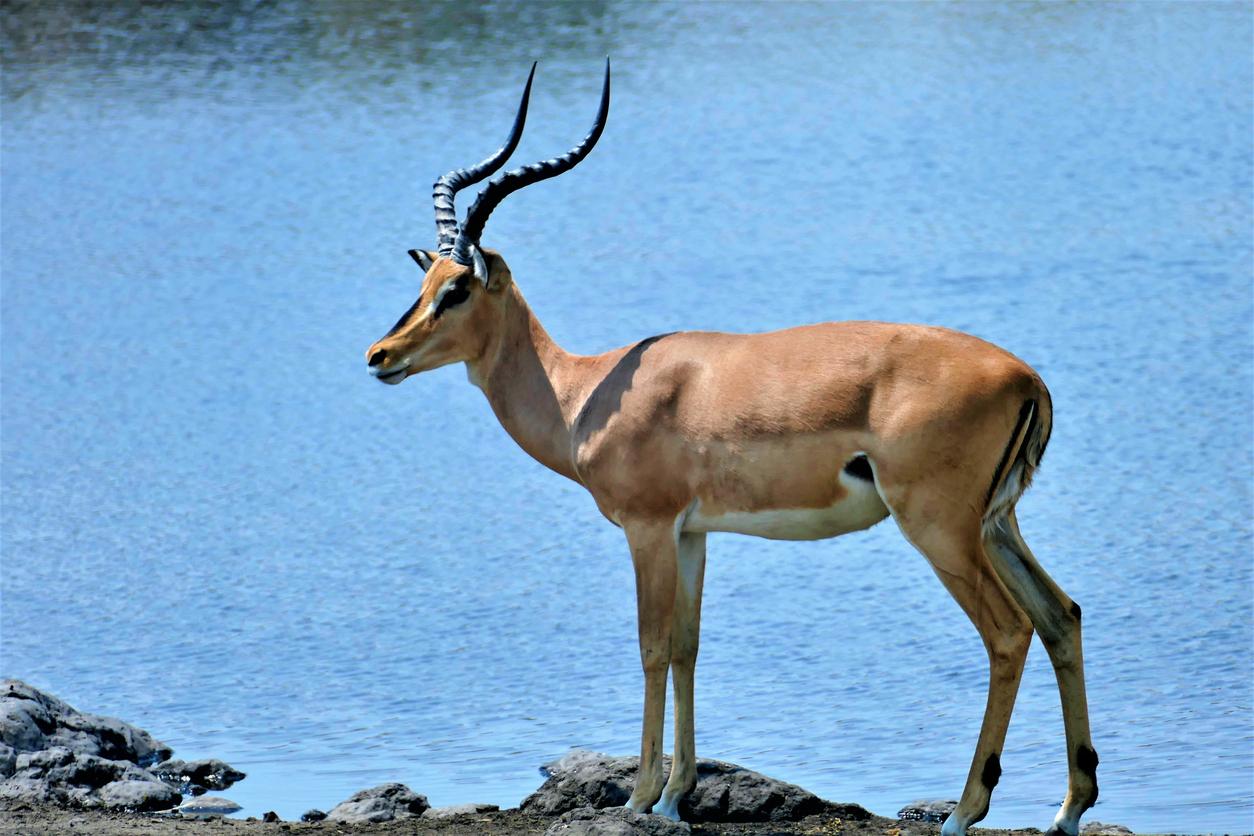

The black-faced impala (Aepyceros melampus petersi) is a medium-sized antelope endemic to Namibia and marginally found in southwest Angola. They are a sub-species of the common impala and are listed as “vulnerable” by the IUCN.
Their chosen habitat includes shaded areas, and they stay close to water, whether it be a water hole, river, or stream. They are browsers and grazers, with their diet consisting of leaf shoots, grasses, and fruits.
Their herds vary in size between 3-15 members, but larger herds are found during lambing seasons. Breeding occurs towards the end of December and peaks during the first month of the year, with one lamb being born after a 6–7-month gestation period.
Predators for this agile antelope include lions, leopards, hyenas, crocodiles, pythons, and African wild dogs, amongst others.
Name:
Aepyceros melampus petersi
Male Weight:
88-170 pounds
Male Shoulder Height:
28-36 inches
Horns:
Male only
Gestation Period:
6-7 months
Life span:
12-15 years
The Black-Faced Impala is fast, astute, and agile, this medium-sized antelope.
Should you be unfamiliar with impala on your African hunt, look for a medium-sized antelope with a dullish brown coat. Their coats are generally darker than other impala species, with a light underbelly. There is a narrow black line that runs along the middle of the impala’s lower back to the tail, and a vertical black stripe is found on the back of each thigh. The distinguishing feature of a black-faced impala is, however, the dark stripe that runs down either side of its nose. The sides of their faces, along with the back of their ears, are more of a reddish-brown hue than a dull brown. Only males have horns that may reach between 15-35 inches long.
When black-faced impala hunting in Namibia, this coveted trophy is targeted by stalking. The challenge when hunting the black-faced impala is getting close enough with so many members of the herd on high alert while grazing. The thrill of this game hunting adventure is being able to outwit the antelope but don’t be surprised when you fail, as mentioned the many eyes and ears make it extremely challenging to get close enough to the herd.
This African hunting adventure is going to challenge you like never before! Hunting impala can be challenging due to the animal’s astute hearing, keen sense of smell, and excellent eyesight, be prepared to utilize all the skills at your disposal to get within shooting range. When impala hunting in Namibia, remember that when they are scared, nervous, or sense danger, impalas will group together. This makes targeting only one animal very difficult, so be sure to get your shot placement correct or you may miss your chosen target completely in the flurry of animals trying to escape the perceived danger.
Should it be legal, a .22 caliber could be used for your game hunting safari. With this size caliber there is no margin for error and shot placement on a game hunting safari is critical. If you do not want to spend the entire day tracking a wounded Impala, a 7mm to 30 caliber would be a better option when game hunting in Namibia.
Search from our range of Hunts across various popular destinations in Africa.
Find A Hunt